Tom’s been back in touch with his HO track layout:
If you want to catch up and see his last post, it’s in the middle of this one.
“Hi everyone,
A quick note of thanks for the info everyone supply’s on this site.
I have used many of your techniques on my first layout albeit with a few setbacks.
I decided early on that I would incorporate multiple types of construction, mainly wood, foam and plaster.
So after a year I’m about half way and wanted to share what all your guidance looks like.
BTW it a Chicago and Northwestern prototype, 1950 to 1970.Thanks again folks.
Tom”
A big thanks to Tom for sharing his HO track layout update.
Now on to Soren:
“Hi Alastair.
I always enjoy your posts immensely – as well as the good railway modeling society you keep up. I am really delighted that you managed the latest crisis.
You asked the other day for ‘H0-chappies’. I am one, just started my third layout. The preceding ones did not come much further than laying track and running trains.
This layout is H0 scale, 16.5 mm gauge, 3 rail AC digitally operated.
Some will already guess that I use Marklin track, which comes with a couple of unbeatable advantages. The three rails mean no wiring problems across points or with reverse loops.
The second has to do with the way the track is made: precision positive locking between track sections plus AC eliminate the need for a bus. The power goes easily 6 – 7 metres (ca 20 feet).
My layout strictly observes rule #1: I decide what goes on it. It is freelance, but I strive for plausibility. My era is before WW1 and the setting is a small duchy called Severania in the mid European mountains. The duke (me) is fascinated by the new railway technology, so he has ordered a railway network to be built.
Of course he has visited Britain and other European countries to learn about building and maintaining railways. The era and setting (mountaneous) somehow fit perfectly with my modest modeling space, making tight curves and short rolling stock appropiate. However, by some quirky turn of fate, the official language of the duchy is Danish, which I incidentally know very well.
The first phase of my modeling will be the – necessarily small – Central Station of the network situated in the capital, Rudersberg.
I attach a photo of my ‘train corner’ (some day to be xtended) and of my proposed track plan. The board – an old desk – will become most of the base with an small triangular section in the right hand side. The top part will become the city with the newest buildings and vehicles from ca 1910. Part of the station’s tracks will be placed in tunnels underneath the citizens’ feet. The people are naturally used to extreme space saving measures.
As more photos become available, so will more of the narrative.
Alastair, keep up the excellent work and happy modelling to everyone.
Soren”
“Mr. Lee.
I recently retired and my wife told me to get a hobby.
I came across your posting and became amazed at what I saw.
As I know nothing about Model trains or backgrounds I don.t know where to start. I do not have a lot of room and I do know there are different gauges of trains, but how do you decide which is right for you?
I see you have what I would call the larger ones and I thing they are out of this world but I don’t believe I have the space for such a large lay out.
Would you give me a little information on this hobby so I can decide if I want to venture into it or not.
Garrie”
A huge thanks to Tom for his update. It just goes to show what can happen when you make a start.
I love what Soren has does. I think having a theme of what you want to do makes a layout. Fantastic stuff!
And Lastly, Garrie.
I think we’ve all been were he his – so this is a call to arms.
What adivce would you give Garrie? Please leave a comment below.
That’s it for today. Please do keep em coming.
And if you want today to be the day you start your layout, the Beginner’s Guide is here.
Best
Al
PS Latest ebay cheat sheet is here.

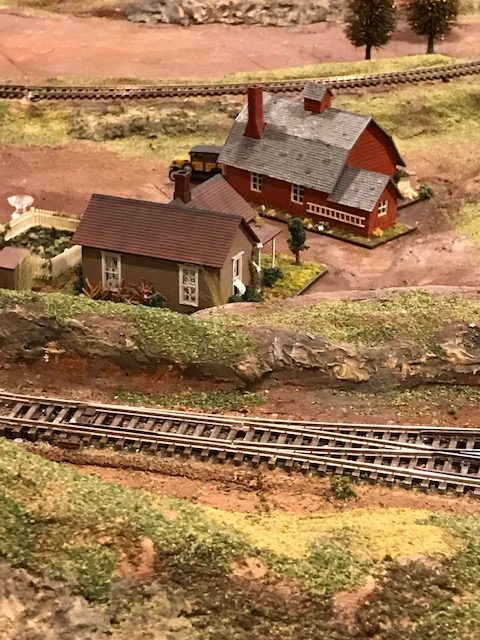
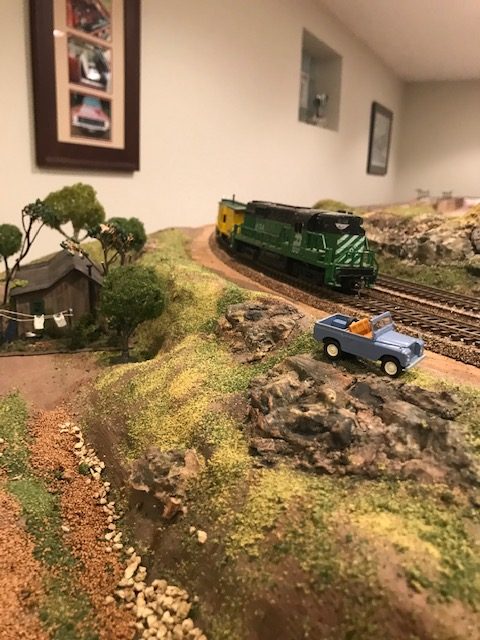
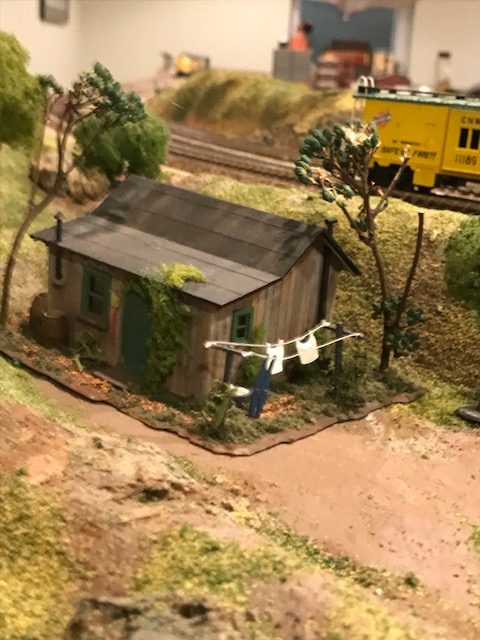
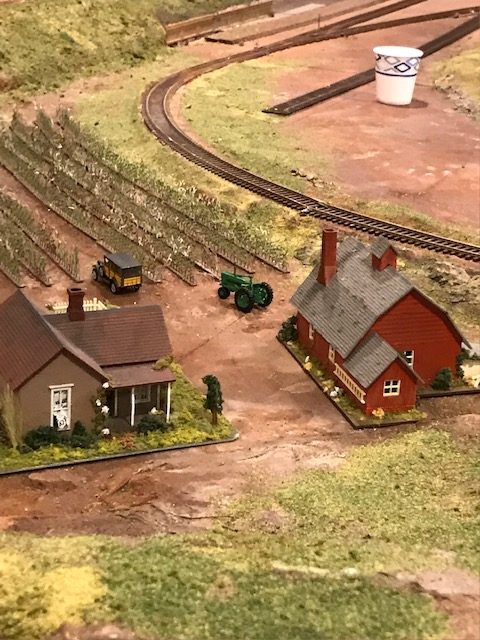
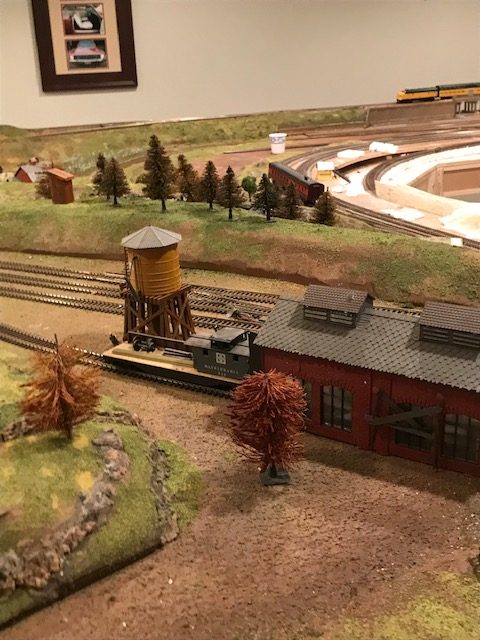
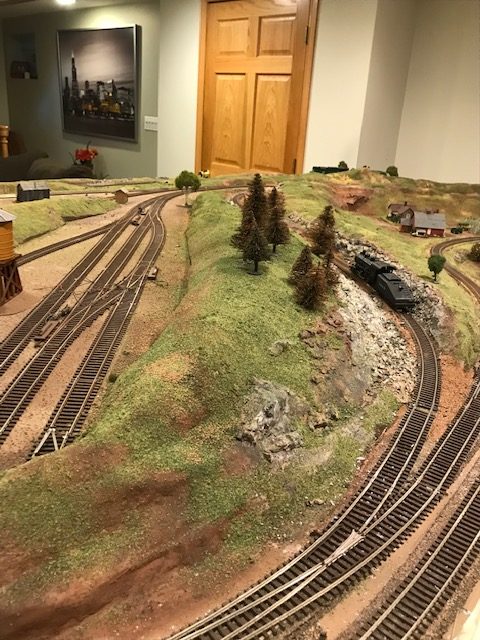
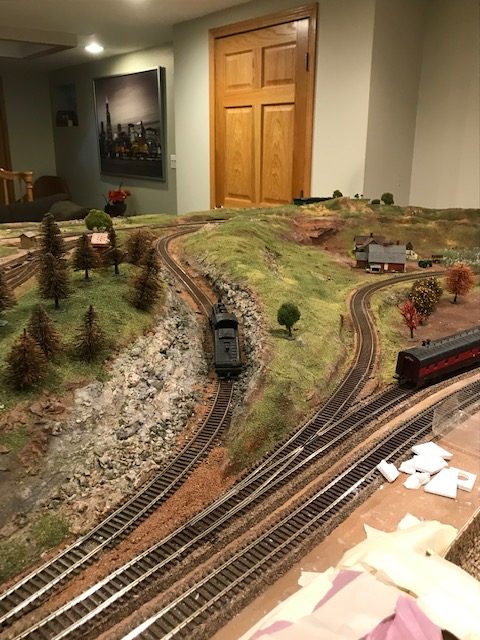

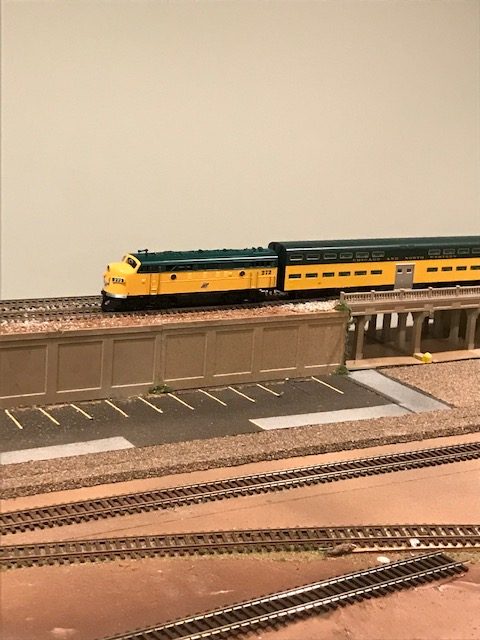
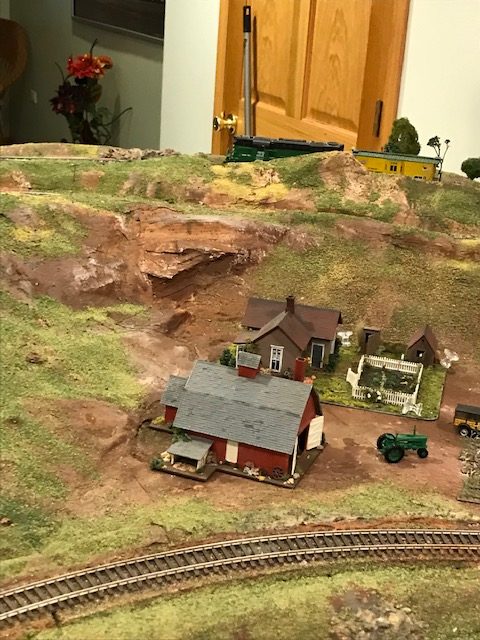
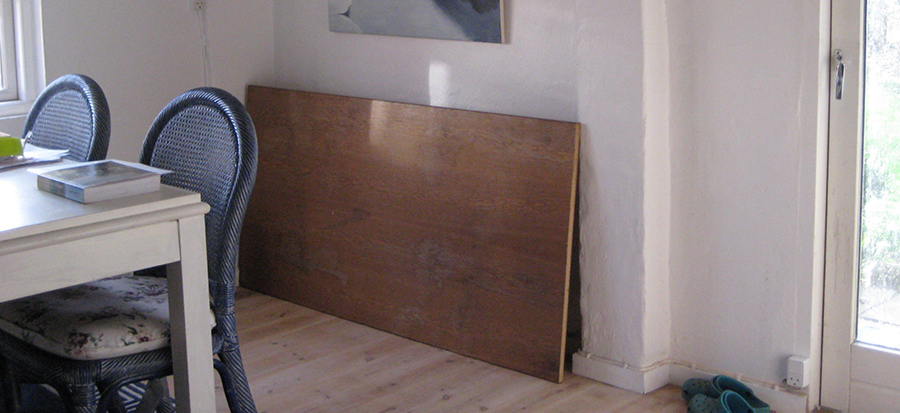



Nice layout you have built there Tom ..and Garrie you can have a great layout in a small area , just check on YTube there are a lot on there to give you inspiration …dangerous dave
If you can find a train show and go look at some layouts and talk to some of the people. Look at the train sizes and see what fits your eyes and hands. Then go around to the booths and see what fits you budget. This to me are the 3 most important things. As they say size does not matter bea uses you can always start switching in as little as 4-6 feetlong and 1 foot wide.
Hi Al,
and Gary,
Our Club is about to build a small layout for an elderly and sick gentleman in a retirement home. Because of the very limited space we have decided to build it on a normal but wide house door, 900 mm wide. Very light weight but very rigid.
Many thanks for your brilliant site.
Garrie,
You need to go to some exhibitions and talk to the exhibitors to get ideas face to face with what is possible in small spaces. You will also be able to see “live” solutions to problems that are sometimes difficult to envisage in 2 dimensions on a screen. You could also seek out a club you will not only have the club layouts but those at home. Also club members would be more than willing to teach you the techniques needed to enjoy the hobby. Hopefully, you will then be able to spark an idea that you feel capable of creating – remember from great oaks grow from small acorns.
starting out you have to gauge the area to how much of a train set you want to make and detail of train. o scale takes up a lot of space with great detail. ho you can have a great layout in the same space with good detail of trains . n scale you can use on smaller layouts but lose some of detail of trains since you have to look closer at them.
What? No pictures of your Roundhouse design? Almost any good hobbyist can lay track, but building a working turntable and roundhouse is exceptional work.
Thank for your well thought-out layout.
Tom,
Nice layout. Your C&NW train brings back memories. Those trains used to run right next to where I worked.
Tom… after only one year….that is amazing. Great work, great detail
Gary M
Hello Garrie,
Without knowing quite how much space you have, and whether you would like a simple or a complex layout, it is hard to recommend a scale.
However, the two scales which are most likely to suit you are N gauge and OO gauge. I would suggest that you look at some track plans for both gauges to see what would fit in the space you have available. You can get some good books of track plans from Amazon. I just did a search for Peco Track Plans and lots of books came up at very reasonable prices gauges.
I also agree with John Morgan that model railway exhibitions will give you lots of ideas on what can be achieved, and joining a model railway club is an ideal way to get into the hobby and hone your skills.
Colin.
Tom’s layout is very beautiful. I like that it isn’t crowded. The buildings are great. I especially like his farm. I know this is a work-in-progress but I have a suggestion: cut the foundations of the buildings into the ‘soil’ of the layout surface. They would look so much more natural, and not look like they are floating.
I also run some C&NW equipment along with my Milwaukee Road and Great Northern, etc.
Garrie.I suppose it depends on “how little not enough space” you have.Go to a train show or hobby shop and see the various scales.Some are so small as to defy logic.N scale is a space saver,then as you go smaller it gets more costly.But there is Z scale and a new scale called TT(smaller than Z).With a TT layout,you can virtually fit an entire layout in a suitcase. You might also consider besides the small space you have adding shelving around the walls and adding some trains there as well.I have seen shelf layouts with 2 track mains around the room.Those ran about whilst the owner was “playing” with his table layout.You can even have different scales for your shelf and table layouts
Garrie, I have re-started my activity after 50 years of being out of it, so I was somewhat where you are. There is a lot of great advice in the previous posts, but I will add some of my own. First, decide what you want out of the hobby; do you want to just see trains run; do you want to do a lot switching; do you want to spend a lot of time on scenery; are you handy with tools and willing to learn how to use the techniques? Once answered, decide what space you have. Obviously, the smaller scales allow more train per square foot than larger scales, but this should be tempered by your interest and abilities. (For example, I have involuntary tremors which makes detailing difficult and frustrating.) You will find a lot of good advice here; I do suggest that you check out Model Railroader’s series on track layouts. There is a large variety of small area plans available. Remember, the hardest part is in taking the first step.
Garrie:
In short , space, cost and age dependency can all factor into the decision as to your gauge selection. The latter translates into “how is your vision and how flexible is your physical are your joints for bending”?” I started by O -gauge layout (13′ by 26′) at the age of 68, finishing up at 77. Solving issues both above and below the table top (40″ – 80″) was significantly tougher both seeing and bending in my latter years.
Now go talk to the experts as others have suggested.
Hi Garrie,
There is a lot of good advice given in these replies. The only advice I would give you is to find and join a Model Railway club first. There you will find all the working advice you need, plus you may get to run a working model. Get to fully understand what the costs can be, they do have a way of getting big, decide whether you want a DC or a DCC set up. Club members will help you with these many choices.
All the best to you, it is a great retirement job (hobby).
Hello Tom, and congrats on your fantastic work so far!
Is there any chance you can show us a “long overview photo” of your layout, perhaps from both ends? And a rough track plan would be wonderful for understanding your overall layout. Terrific start!
Ralph in Eureka, Missouri USA
YouTube is full of advice from really great people.
My experience was 0, four years ago and I spent hundreds of hours roaming youtube and other websites before i bought even a stick of lumber.
Ebay is about the only place I buy from it is well organized and prices reasonable. Stick with the 2 in foam board for your platform or bench work. Is is quiet and VERY easy tonwork with. Woodland Scenics has foam road bed. Which is also quiet and a lot easier to work with than cork. DCC. is the only way to go, easy simple and lots of opportunity for creativity. I bought Al’s beginner guide, money very well spent.
Hi Garrie,
If you’re short of space, maybe you could expand when you’re working on it or operating it, and fold or stack it away at other times? For instance my son’s layout sat on top of the double bed in our spare room, but could be picked up and stood on end against the wall, covered in a sheet, when the bed needed to be used. Many British layouts are designed to fold or come into sections, both for storage and to go out to exhibitions. There’s a good, cheap little book, A home for your model railway, by CJ Freezer, published by Peco, full of ideas.
Railroading is Fun but can be expensive. Each scale has plus and minuses as mentioned above. Your physical abilities may change in future. Mine did. Visit people who have RR sets. Tables or the big layouts. Lift up diff scale engines. Feel them in you hands. This is a hands on hobby. Start small and plan to grow. Space will always be consideration. A 4×8 sheet is like a pool table in the middle of a room. You have to get to all 4 sides. But nice too. Running along walls can be great and allows for easier expansion. Easy access. You need to decide if you like to watch trains run or to operate. Eventually most folks want some operating action. I did too. Are you building for yourself or will little people come over and want to help? If you had to move, can you be able to disassemble and reassemble? Or complete tear down. Start small and get your feet wet. Do some preliminary research. Visit shops and people’s RRs. Reassess in a year. Are you in the right scale? 5 years later and hundreds and hundreds of dollars spent, and many hours invested is sad time to reflect on why you are not satisfied. Some folks do enjoy starting from scratch in diff scale. It is not like you are married to your first set. The hobby is greatly rewarding as you can excell in any one aspect of modeling. Scenery, buildings, animation, electrical wizardness, operating, detailing, etc. Also allows you to scrounge and scratch build stuff out of “junk” because you can! Pick up an engine and imagine for a moment. Then start. Good luck.
Very nice layout! Great job! I Realy enjoy these entries from Alastair Lee.
Garrie; It all depends on how well your hands work. The most popular scale is “HO” but you can go smaller if your still have good hands. I’m working in both and want to combine them at some point. But welcome to the world of model Railroading.
Nice wide sweeping curves, I like the clothesline detail.
Garrie: There are some great YouTube Channels, where I got some great inspiration. I have spent very little on my railway stuff, as I have bought it from auctions, car boot sales (flea markets), Facebook and Ebay.
Garrie, I would suggest that you choose a train set with track, control, and train and set it up to go around on a flat board. You will quickly find if that scale is your thing or mot. At most you will invest about a $100 before you get into heavier action. Try simple landscaping using Als buildings, and scenery to get a feel, then ad a tunnel at one end. By this time you will quickly see what you want in the long run.
Garrie,
I agree with Bob Schildgen, you should start with a train set that includes an oval of track, a power supply, and engine and some cars in a scale that’s popular like HO/OO or N. These will be the most reasonably priced as they are also the most popular scales and you will be able to sell the set or parts of it later if you change your mind. Even though I’ve been collecting model railroad equipment for about 60 years, I’ve never built a layout.
Thanks to Al’s blog here, I’ve finally resumed work on a Christmas train layout that I had started 23 years ago. I recently bought a Bachmann HO train set that included an oval of EZ-track, a small power pack, and an 1890’s old-time 4-4-0 train engine and a few railroad cars (or wagons if you prefer.) It even included a small plastic building kit. All for $129 plus shipping.
I set it up on my dining room table and proceeded to run that train around and around until I got tired of it. Then I dug out some other engines and cars I had acquired over the years but had never seen them run. What a treat! One of the engines was a Bachmann 2-6-0 Mogul that could be controlled with my cell phone using a Bluetooth connection via an app I downloaded. This allowed me to get a taste of what DCC (Digital Command Control) offers althought this is strickly a Bachmann system and quite limited compared to what real DCC offers.
The cool thing was that even though the engine didn’t have a DCC sound board and speaker in it, the app allowed me to hear the train sounds via the cell phone’s speaker. This included the chuffing of the steam engine’s cyclinders, the bell and whistle, and even the braking noises as it came to a stop. Just for fun, the app let me change the sound repetoire to a diesel engine to see what that would sound like.
There are all kinds of different aspects to model railroading that you can explore: do you like to build structures? You can get plastic, wood, plaster, or cast metal kits to build just about any kind of structure you’d like. Rod Stewart, the rock singer, combines kits to build his own multi-story skyscrapers for his HO layout.
Do you like making scenery that looks like the real thing? There are hundreds if not thousands of products that can be combined with stuff you collect from around the house to make realistic looking scenery for your layout. Or are you into electronics? You can build complex switching and signalling systems to make your model railroad operate like its real prototype, to the point of even having it all controlled from your home computer. Just search for “model railroad” on YouTube and you’ll find all kinds of videos to give you ideas or what can be done in this great hobby.
My advice Garrie is just to make a start. The rest will come as you get more involved in the hobby. For me it started when I was 12 years old and walked into a hobby shop that had a little model railroad layout. Good luck!
Will
Carrie,
Terrific advice above. One suggestion: Buy Alister’s “Beginner’s Guide”, read it and re-read it. Lot’s of solid advice for beginners.
Then purchase the best track and turnouts you can afford. Budget-based track and (especially) turn-outs will be a source of frustrating problems. Don’t rush. Half the fun of the hobby is planning and building the lay-out — which is why most are never “finished.” Remember this will be a learning process; you will mak mistakes. Don’t be afraid to try and if it doesn’t work, start over; or do it better next time.
But most important: get started!